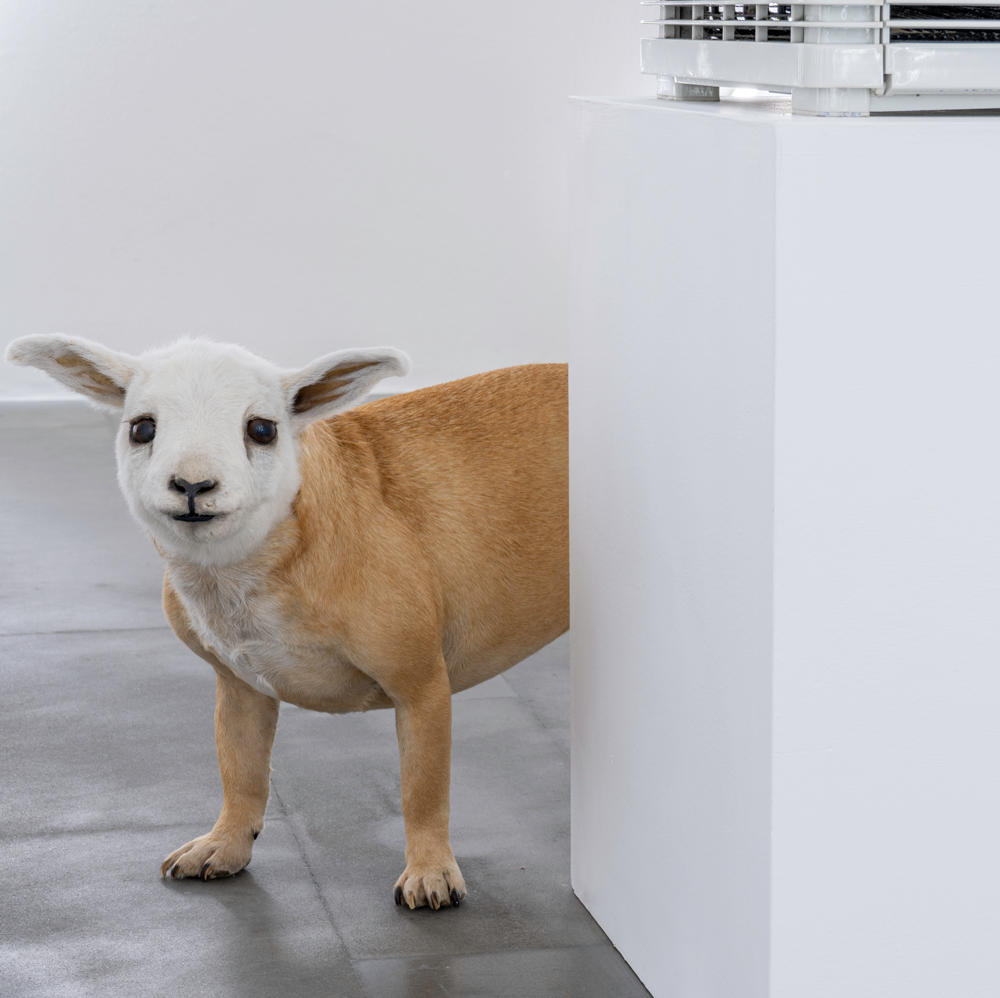Contemporary art becomes a witness to our time, offering new perspectives on the relationship between humans and nature. The MAN has long embraced this direction, studying an exhibition program that reflects on environmental transformations and the interconnections between living beings. Through recent exhibitions like Diorama and Essenze natural, the museum has explored how art can be a tool for awareness and ecological imagination.
With Diorama (July 5 – November 11, 2024), the MAN explored possible future visions of the relationship between humans and the biosphere.
Artists like Luca Trevisani and Marta Roberti have depicted the delicate balance with the planet, transforming creativity into a means to reinvent reality. The sculptures of Thomas Grünfeld, on the other hand, have disturbed our certainties, bringing attention to the theme of genetic manipulation and its ethical implications. Art thus becomes a field of experimentation that invites the visitor to consider how technological advancements can foster creativity.
This is also evident in the works of Alexandra Daisy Ginsberg, which highlight how our fate is deeply intertwined with that of other beings. Through these multiple perspectives, Diorama questioned the relationship between us and the planet, proposing scenarios of interconnection and metamorphosis, challenging our role as protagonists in the delicate ecological balance.
In the “contemporary triptych” Essenze naturali (November 22, 2024 – March 9, 2025), three internationally renowned artists interpret the natural world from different perspectives.
The exhibition Christiane Löhr. Accumuli offers an immersion into a poetic and delicate universe where the artist creates a dialogue between nature and form. With a language of lightness and precision, elements like dandelions, blades of grass, and seeds explore the relationship between balance, proportion, and emptiness, sublimating nature into abstract forms.
In Filira, Alessandro Biggio explores the dialogue between nature and the artistic process through works that reflect on the cycle of life and transformation. Biggio uses organic materials collected from his family’s land in Calasetta, where he burns local plant branches to obtain the ash that forms the base of his works. He also introduces the use of a unique pigment extracted from the berries of the Phillyrea plant, linked to the nymph Filira, creating a pictorial language that intertwines myth and metamorphosis.
Finally, Scenafenomenica by Una Szeemann offers a journey through ancient myths, subconscious states, and natural archetypes, represented through sculptures, watercolors, and installations. In a world dominated by rationality, Szeemann rediscovers the symbolic potential of nature, blending folklore, literature, and psychoanalysis. Like an invitation to rediscover forgotten ancient knowledge, her work reveals the erotic and unsettling component that permeates the Earth and its stories.
Through these exhibitions – still open for just a few more days, until March 9 – the MAN confirms its role as a laboratory of thought and experimentation, able to offer the community an art that not only tells, but questions and stimulates a renewed ecological consciousness. In this context, contemporary art becomes a true agent of change, suggesting new ways of inhabiting and understanding the world around us.
Elisabetta Masala

